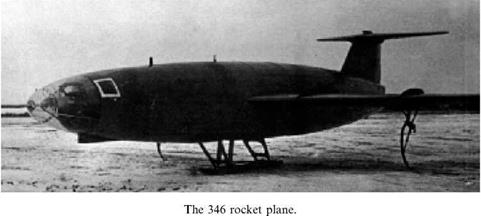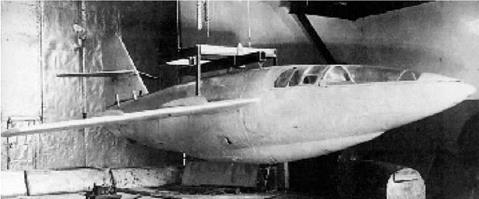MOUNTING CRITICISM
While Gorbachov’s policy of openness or glasnost had enabled unprecedented media coverage of Buran’s maiden flight, it also exposed the program to severe and often sound criticism, especially as the launch date for the next mission kept slipping and few realistic missions for the Soviet shuttle were announced. All this was against the backdrop of increasing public skepticism about the cost and purpose of the space program in general.
As in the US, much of the criticism came from space scientists, who saw little scientific value in Buran. In a rarely seen op-ed on the space program published in the official Communist Party newspaper Pravda in March 1989, the Institute of Space Research’s K. Gringauz called Energiya-Buran a remarkable engineering feat, but pointed out that just like the Space Shuttle in the US it had caused significant cuts in scientific space research, the difference being that the USSR had a smaller economic potential and—unlike the US—already had a permanently manned space station and adequate space transportation systems available. Gringauz continued:
“Rockets of the Energiya type can apparently be used not only to launch Buran, but also for manned flights to Mars. However, the beginning of such flights is planned for 2015, and in a quarter century’s time the control systems and all its special components will have become obsolete. In my opinion, it cannot be ruled out that the main reason for developing the Energiya-Buran system was the industry’s striving for self-confirmation and not the real needs of the country and science’’ [8].
The following month Pravda’s science editor lamented the lack of progress in the program and its high cost:
“Much has been said and written about Buran and all kinds of hopes were pinned on it. But after its unmanned test flight it has got stuck in the hangars of Baykonur. Can’t it be incorporated into the well-established system of space stations and expendable spacecraft? Have technical difficulties been discovered? As usual, one can only guess, because no news is leaking out from those hangars. But even without such news, it is clear that billions of rubles so badly needed for the national economy have been withdrawn from circulation for a long time to come’’ [9].
In late 1991 Yaroslav Golovanov, one of the country’s most respected space journalists, published a damning analysis of Buran’s intended missions in the prestigious Izvestiya newspaper. For one, he said, Buran was not an effective satellite launcher:
“The cost of a single [Space Shuttle] flight is some 10-20 times higher than people initially thought it would be. Of course, our Buran… is infected with the same disease… The Buran launch cost roughly 170 million rubles. Calculations show that that puts the cost of lifting one kilogram of payload on Buran at 6,000 rubles. If that payload were launched on a Soyuz rocket, it would cost only one-sixth of that.”
As for returning satellites from space, Golovanov wrote that “not a single of our puny satellites is so valuable that its return via Buran wouldn’t be wasteful,” adding that no such satellites were going to appear in the foreseeable future either. He also questioned the need to use Buran for servicing space stations, quoting Soviet space officials themselves as saying that their expendable transport ships were more effective. Turning to the military uses of Buran, Golovanov noted its ineffectiveness as a quick-response weapon because of the lengthy launch preparations and the limited number of launch azimuths. Concluding his analysis, Golovanov wrote:
“Who can explain to me and to the millions of my countrymen—whose money has been used to build that star plane—why we need it if none of the space systems that has been created or is actually under development has been adapted to be put into orbit by Buran or Energiya or brought back down from orbit [by Buran]?’’ [10]
Faced with ever more penetrating questions from journalists relishing their newly found freedom, Soviet space officials had little choice but to disclose the true motives behind the creation of Energiya-Buran. In a television interview on 12 April 1991 Yuriy Semyonov said:
“I have to say frankly that Buran was developed to counter the Shuttle. It’s only now that everyone, including [Defense Minister] Marshal Yazov, is repudiating it: they say Buran is unnecessary… The project was originated by the Defense Ministry, although they are now disowning it. All this took place before my very eyes. It was designed to counter or parry, as it were, the work that was being done in the United States’’ [11].
Responding to criticism about the lack of payloads, officials were quick to point out that Buran should not be primarily seen as a system to launch and retrieve ordinary satellites. In an interview in late 1989 Aleksandr Dunayev, the head of Glavkosmos, said:
“The irony is that we have always said that the Energiya-Buran system should not be regarded as a transportation system (what will it carry?); it will be considerably more costly than conventional launch vehicles, and now these very arguments are being used against us: We have made a mistake, they say. We have made no mistake. The Energiya-Buran system was conceived primarily for defense purposes and it was deemed quite essential, and all other issues … were to be secondary. Does this mean that the system has no peaceful applications? It is impossible to imagine that’’ [12].
When elaborating on those “peaceful applications”, Buran’s designers were hardly able to make a convincing case. Speaking in an interview shortly after Buran’s flight, Semyonov said Buran’s primary task would be:
“to launch costly facilities outfitted with unique scientific instruments, for example, large optical telescopes, with sophisticated electronic equipment. Other uses could include the creation in orbit of big radio telescopes, aerial systems, solar power stations, and interplanetary complexes. These are extremely expensive constructions, each of which is the only one of its kind and needs to be serviced by manipulators, robots, and qualified personnel.’’ [13].
However, as Semyonov was probably all too well aware himself, such plans existed only on paper and would take many years if not decades to come to fruition. The harsh truth was that Buran was slowly turning into a relic of the Cold War and its developers were having a difficult time concealing it.



















